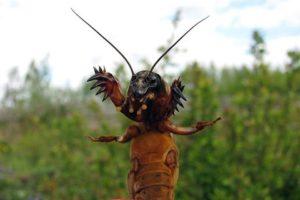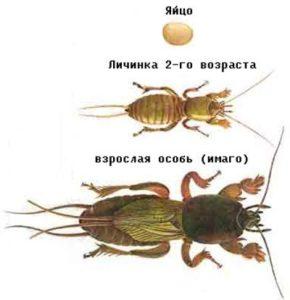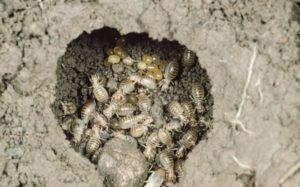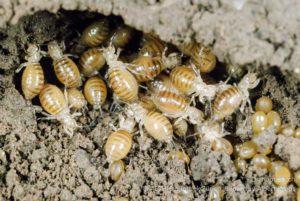What does a bear and its larva look like: a caring mother and offspring
Medvedka is a malicious enemy of gardeners and gardeners. It harms many plantings, gnawing roots and tubers. She also reproduces rapidly, laying many eggs and carefully caring for her offspring.
Content
The appearance of the bear
The adult bear is large, brown in color from dark above to light yellow below. It is covered with a strong chitinous shell and many hairs.
Distinctive are the forelimbs, which look like miniature paws of a mole. They are a pest and actively move underground. There are wings on the back, which the Kapustian rarely uses.
Medvedka breeding
Unpleasant-looking individuals of the pest, which was nicknamed earthen cancer, begin their mating season when a consistently high temperature sets in. The average daily indicator should be above +12 degrees.
Adults mate on the ground surface. Males lure females with an unpleasant buzzing sound. After fertilization, the female descends underground, preparing a place for masonry.
Nest
The female makes a nest in one of the branches of a large labyrinth. This place is shallow, no more than 15 cm underground. There she makes a neat cavity where she lays her eggs.
There can be up to 500 of them in one clutch, but most often there are no more than 300 of them. Most often, the place above the nest is empty, the bear deliberately destroys the plants so that the place is well warmed up by the sun.
Medvedka larva
The eggs are small, elongated, beige or brown. There are many of them, which contributes to survival. They need sufficient heat and high humidity.
The mother often turns her eggs over and licks them to keep them free of mold. They lie for 2-3 weeks and then small larvae appear. They are small, 3 mm in size, light red in color and look like their parents.
Growing up larva
After hatching, the larvae actively feed on the mother's saliva and the remains of the egg shells. The first molt occurs in a week. Until complete transformation, another 6-10 lines will pass for 2 years.
Kapustyanka larvae begin to actively eat everything that it comes across. Seeds and roots suffer from them. They love moist and warm soil. They like places where there is a lot of fertilizer, manure heaps. But part of the offspring dies in the process of growing up from people and natural enemies.
How to remove a nest
If you track down the cabbage and find its nest, then you can significantly reduce the population of these pests. For this you need:
- Find a place with a bald spot and destroyed plants.
- Find a small hole, find a passage.
- Gradually pass through it, remove the soil in layers.
- When the bifurcation begins at the end, then the camera is close.
- It is oval, inside a lot of eggs.
- You can carefully remove the nest with a shovel or carry it away.
- If it’s a pity to press, you can simply open it and leave it in the sun. The eggs will dry out quickly.
Conclusion
Kapustyanka larvae are the same small pests as adults. They are actively growing, so they eat a lot of plants and seeds on the site. These animals can cause significant damage to plantings at the stage of growing up.
Previous


